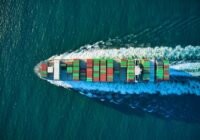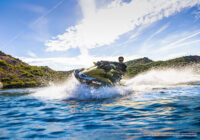by Miranda Blazeby, Digital Editor. SailGP
SailGP’s international commentators have praised the condensed four-race format of Copenhagen and dissected all the racing action from the event, including the unchallenged dominance of the Kiwis.
The four-race format, which consisted of three fleet races and a Final podium race, was unveiled for the second day of the ROCKWOOL Denmark Sail Grand Prix after the first day was called off amid light winds.
All three commentators complimented the fast and furious format, which only allowed for a six minute turnaround between each race.
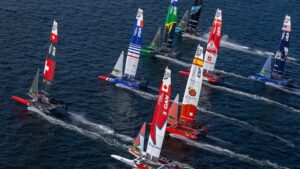
“I’ve always been a big fan of getting to the racing as quickly as possible and everyone was keen to see the crews get out there,” said broadcast commentator Todd Harris. However, he voiced concern at the quick turnarounds, which meant there would be no time to repair equipment breakages.
“My only concern was that if someone had a breakage, there wasn’t time for that to be repaired – they would just be out.”
However, Emily Nagel disputed that this was ‘a bad thing’, arguing that the format ‘puts pressure on teams to look after their equipment in the knowledge that if they break anything, it’s really going to impact them.’
She agreed that the shortened turnaround time ‘really paid off for everyone watching’.
When it came to the racing, Peter Burling’s Kiwi team dominated, winning all three fleet races and soundly beating Denmark and France in the three-boat winner-takes-all Final.
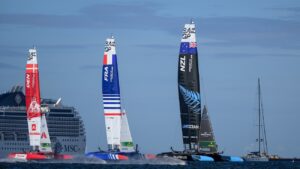
The team’s performance was ‘impressive to see’, Nagel said, suggesting the last-minute crew change on board the Australian boat, which saw wing trimmer Kyle Langford swapped for Ed Powys, would have been a ‘confidence boost’ to the Kiwis ahead of racing. ‘That’s the knowledge that one of the leading teams might not be as good’.
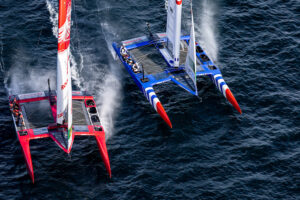
However, Stevie Morrison argued that even with Kyle Langford on board the Australian boat and the absent British team competing, both teams would have been unable to halt the march of the Kiwis.
“The New Zealand team’s tacks and gybes are the strongest in the fleet and they’ve been getting off the start line well – I don’t think Australia or Great Britain would have challenged them,” he said.
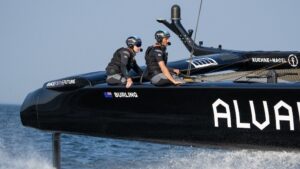
Harris agreed. “The way they sailed those three races left no doubt on who the best team is,” he said. “ I know Pete [Burling] doesn’t like it when we say they’ve cracked the F50 code, but it does seem like that”.
Switzerland
One of the big stories of the event was former Japan driver Nathan Outteridge stepping into the driver seat of the Swiss F50. The team struggled amid gusty conditions and finished the weekend with a 7-7-5 fleet racing record.
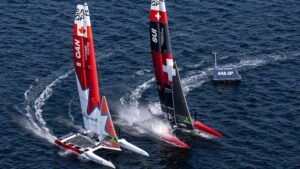
But Nagel said this was unsurprising, claiming the entrance of Outteridge was unlikely to be ‘an immediate game changer’. “As a team, they have a lot to learn,” she said. “Just bringing in a rockstar to helm isn’t going to solve the problem”. Harris agreed, arguing the performance proved that ‘someone like Nathan Outteridge can only do so much’. All three commentators named Switzerland as a team to watch going forward, predicting greater success at upcoming events. “I think they’ll get into a podium race before the season is out,” Harris said.
Canada
It was a similar story for newcomer team Canada, which struggled off the start line and ended with a 4-5-7 fleet racing record. The gusty conditions challenged new crews, Nagel said, and ‘weren’t conjusive to learning.’ Morrison agreed, arguing the conditions exposed the F50 as the ‘ultimate team boat’.
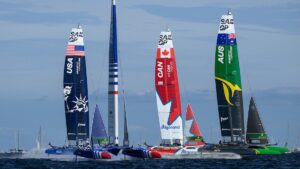
“All six sailors need to be working really well together,” he said. “People like Nathan [Outteridge] or Phil [Robertson] or Tom [Slingsby] can’t do it alone.”
All nine international teams will meet again at the France Sail Grand Prix | Saint-Tropez on September 10/11.






